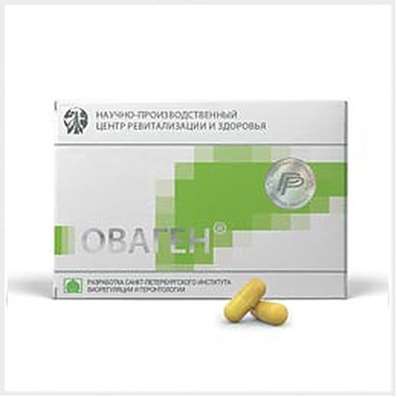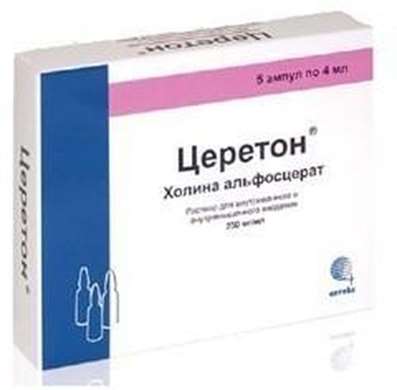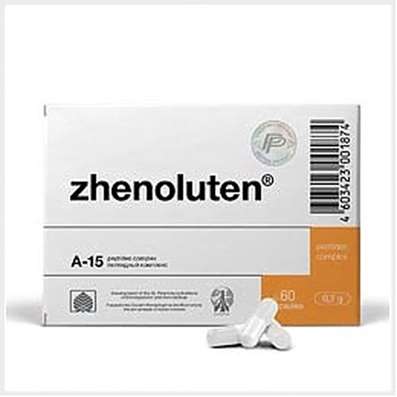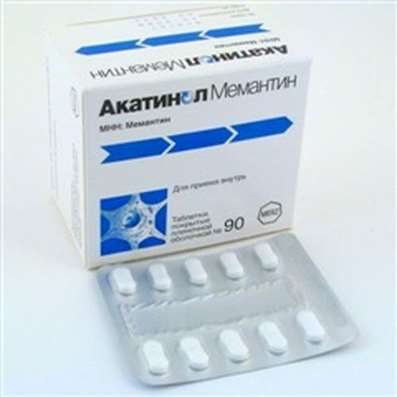Instruction for use: Equoral
I want this, give me price
Dosage form: Capsules; Soft capsules; Oral solution
Active substance: Cyclosporinum
ATX
L04AD01 Ciclosporin
Pharmacological group:
Immunodepressants
The nosological classification (ICD-10)
H30 Chorioretinal inflammation: Retinitis; Chorioretinitis; Central and peripheral chorioretinal dystrophy
L40 Psoriasis: Chronic plaque psoriasis with diffuse; generalized psoriasis; Psoriasis of the scalp; hairy parts of the skin; A generalized form of psoriasis; Psoriazoformny dermatitis; Psoriasis complicated with erythroderma; disabling psoriasis; Isolated psoriatic plaque; Eksfolliativny psoriasis; psoriatic erythroderma; Psoriasis with eczematization; Hyperkeratosis in psoriasis; Inverse psoriasis; Psoriasis ekzemopodobnye; dermatoses psoriazoformny; Psoriasis genitals; Psoriasis lesions with hairy areas of the skin; erythrodermic psoriasis; Chronic psoriasis of the scalp; Chronic psoriasis; ordinary psoriasis; refractory psoriasis; Koebner phenomenon; psoriasis
M06.9 Rheumatoid arthritis, unspecified: Rheumatoid arthritis; Pain syndrome in rheumatic diseases; Pain in rheumatoid arthritis; Inflammation in rheumatoid arthritis; Degenerative forms of rheumatoid arthritis; Children's rheumatoid arthritis; Exacerbation of rheumatoid arthritis; Acute articular rheumatism; Rheumatic arthritis; Rheumatic polyarthritis; Rheumatoid arthritis; Rheumatic polyarthritis; Rheumatoid arthritis; Rheumatoid arthritis; Rheumatoid arthritis of active course; Rheumatoid periarthritis; Rheumatoid polyarthritis; Acute rheumatoid arthritis; Acute rheumatism
M35.2 Behcet's disease: Arthritis in Behcet's disease; Uveitis Behcet; Behcet's syndrome; Turena is a big aphthous; Skin rashes with Behcet's syndrome
N04 Nephrotic Syndrome: Nephroz; Edema of the kidneys; Nephrotic syndrome; Lipoid nephrosis; Nephrotic syndrome without uremia; Acute nephrotic syndrome; Edematic syndrome of renal genesis; Renal form of diabetes insipidus; Segmental glomerulosclerosis; Segmental glomerulonephritis; Focal glomerulosclerosis; Focal glomerulonephritis; Family Nephrotic Syndromes; Chronic nephrotic proteinuric syndrome; Lipiduria; Jade hereditary; Nephrotic-proteinuric syndrome
T86.0 Bone marrow transplant rejection: Rejection during bone marrow transplantation
T86.1 Kidney transplant death and rejection: Reaction of acute rejection of a transplanted kidney; Refractory tissue rejection in patients after allogeneic kidney transplantation
T86.2 Dying and rejection of a heart transplant
T86.3 Dying and rejection of the cardiopulmonary graft: The rejection of the combined cardiopulmonary graft
T86.4 Dying and rejection of liver transplant
T86.8 Dying and rejection of other transplanted organs and tissues
Composition and release form
Capsules - 1 caps.
Cyclosporin 25 mg
Auxiliary substances: ethyl alcohol - 39.9 mg; Macrogol glyceryl hydroxystearate - 73.7 mg; Polyglyceryl (3) oleate - 82.7 mg; Polyglyceryl (10) oleate - 50.0 mg; D, L-alpha-tocopherol - 0.25 mg
Gelatin capsule shell: gelatin - 95.1 mg; Glycerol 85% - 44.3 mg; Solution of sorbitol - 8.6 mg; Iron oxide yellow - 0.1 mg; Titanium dioxide - 0.8 mg; Glycine 1.1 mg
Capsules - 1 caps.
Cyclosporin 50 mg
Auxiliary substances: hydroxystearate - 147.4 mg; Polyglyceryl (3) oleate - 165.3 mg; Polyglyceryl (10) oleate - 100 mg; D, L-alpha-tocopherol - 0.5 mg
Gelatin capsule shell: gelatin - 222.2 mg; Glycerol 85% - 103.8 mg; Solution of sorbitol - 20.2 mg; Iron oxide yellow - 0.8 mg; Titanium dioxide - 0.5 mg; Glycine - 2.5 mg
Capsules - 1 caps.
Cyclosporine 100 mg
Auxiliary substances: ethyl alcohol - 159.6 mg; Macrogol glyceryl hydroxystearate - 294.7 mg; Polyglyceryl (3) oleate - 330.7 mg; Polyglyceryl (10) oleate-199.9 mg; D, L-alpha-tocopherol - 1 mg
Gelatin capsule shell: gelatin - 315.2 mg; Glycerin 85% - 148.3 mg; Solution of sorbitol - 28.7 mg; Iron oxide brown - 0.7 mg; Titanium dioxide - 3.6 mg; Glycine - 3.6 mg
In the packaging of a contiguous cell 10 units; In a pack of cardboard 5 packages.
Solution for oral administration 100 mg / ml 1 ml
Cyclosporine 100 mg
Auxiliary substances: ethanol - 120 mg; Macrogolglycerol hydroxystearate - 280 mg; Polyglycerol (3) oleate - 310 mg; Polyglycerol (10) oleate - 190 mg
In a vial of dark glass 50 ml; In the plastic case 1 bottle.
Description of dosage form
Capsules 25 mg: opaque, yellow, 12.5 × 8 mm, soft, oval gelatin capsules.
Capsules 50 mg: opaque, brown-yellow, 21 × 8 mm, oblong soft gelatin capsules.
Capsules 100 mg: opaque, brown, 26 × 8 mm, oblong soft gelatin capsules.
Each dosage of the capsule is identified by a printed double delta and text: "25 mg", "50 mg", "100 mg".
The contents of capsules are a transparent oily liquid from yellow to yellow-brown in color. Each dosage of the capsule is indicated by the printed IVAX and the text: "25 mg", "50 mg" and "100 mg", respectively.
Solution for ingestion 100 mg / ml: clear from yellowish to yellow-brown color oily liquid
Characteristic
It is a cyclic polypeptide consisting of 11 amino acids.
Pharmachologic effect
Mode of action - Immunosuppressive.
At the cellular level, it inhibits the formation and release of lymphokines, including IL-2 (growth factor of T-lymphocytes). It blocks lymphocytes at rest in the G0 or G1 phase of the cell cycle and suppresses the antigen-dependent release of lymphokines by activated T lymphocytes. All the data obtained indicate that cyclosporine acts on lymphocytes specifically and reversibly.
Does not inhibit hemopoiesis and does not affect the function of phagocytic cells.
Pharmacokinetics
After ingestion Cmax in the blood is noted in the interval from 1 to 6 hours, with bioavailability averaging 30% (20-50%) and increases with increasing dose and duration of treatment. Absorption is reduced after liver transplantation, with liver diseases or gastrointestinal pathology (diarrhea, vomiting, intestinal obstruction).
Intensively binds to proteins and shaped elements of blood (concentration in whole blood is 2-9 times higher than in plasma). The connection with proteins is 90% (mainly with lipoproteins). It is distributed mainly outside the bloodstream: 33-47% in the plasma, 4-9% in the lymphocytes, 5-12% in the granulocytes, 41-58% in the erythrocytes. After oral administration of Tmax in the plasma - 1,5-3,5 h. Intensively metabolized in the liver by cytochrome P4503A, to a lesser extent in the digestive tract and kidneys with the formation of 15 identified metabolites. It is excreted with bile; Kidneys with urine - 6% of the administered dose. Excreted in breast milk.
T1 / 2 in adults - 19 hours, in children - 7 hours, regardless of dose or route of administration.
Indication of the drug Equoral
The "graft versus host" reaction (GVHD) - prevention and treatment; Autoimmune diseases.
Indications related to transplantation: transplantation of solid organs (prevention of graft rejection after allogeneic transplantation of the kidney, liver, heart, combined heart-lung, lung or pancreas medication, treatment of graft rejection in patients previously receiving other immunosuppressants, bone marrow transplantation (prevention of rejection) Transplantation after bone marrow transplantation, prevention and treatment of GVHD.
Indications not related to transplantation: endogenous uveitis (active, eye-threatening uveitis of the middle and back of the eye of non-infectious etiology, if conventional therapy is unsuccessful or leads to severe adverse reactions), Behcet's uveitis with recurrent attacks of inflammation affecting the retina; Nephrotic syndrome (steroid-dependent and steroid-resistant forms in remission); Rheumatoid arthritis (severe forms), psoriasis (severe forms, when systemic therapy is required).
Contraindications
Hypersensitivity to the components of the drug, malignant neoplasms and precancerous skin diseases, chicken pox, Herpes zoster (risk of generalization of the process), severe liver failure, hyperkalemia, hypertension, malabsorption syndrome, infectious diseases in the acute phase.
Application in pregnancy and breastfeeding
The experience with cyclosporine in pregnant women is limited. Data obtained from patients in the posttransplant period show that treatment with cyclosporine increases the risk of adverse effects on the course and outcome of pregnancy. If it is necessary to appoint an Ecoral, breastfeeding should be stopped.
Side effects
In the first week of using the drug, a burning sensation on the skin of the extremities is possible. After organ transplantation, the most common are hypertrichosis, tremor, renal dysfunction and liver dysfunction, gingival hypertrophy, GI disorders (anorexia, nausea, vomiting); Dose-dependent and reversible increase in the level of creatinine, urea, bilirubin, liver enzymes in the blood serum (careful monitoring of parameters and correcting the dosage of cyclosporine is necessary).
Heart transplantation most often develops hypertension, with kidney transplantation this side effect happens less often.
When bone marrow transplantation occurs most often: disorders of the digestive tract, tremor, hypertrichosis, there may be swelling of the face. Children have swelling and cramps.
Adverse reactions are moderately expressed and are usually eliminated with reduced dosage of the drug.
Interaction
Inducers or inhibitors of cytochrome P450 can reduce or increase the concentration of cyclosporine in the blood.
Drugs that reduce the concentration of cyclosporine: barbiturates, carbamazepine, phenytoin, nafcillin, sulfadimidine (with iv introduction); Rifampicin, octreotide, probucol, orlistat; Preparations containing St. John's wort (Hypericum perforatum); Troglitazone.
Drugs that increase the concentration of cyclosporine: some antibiotics - macrolides (mainly erythromycin and clarithromycin); Ketoconazole, fluconazole, itraconazole, diltiazem, nicardipine, verapamil, metoclopramide, oral contraceptives, danazol, methylprednisolone (high doses); Allopurinol, amiodarone, cholic acid and its derivatives.
Avoid ingestion of erythromycin (increases the concentration of cyclosporine in the blood). If, because of the lack of alternative therapy, erythromycin is prescribed, it is recommended to carefully monitor the concentration of cyclosporine in the blood, the function of the kidneys and the presence of side effects of cyclosporine.
Caution should be exercised with the simultaneous administration of drugs with nephrotoxic action, for example: aminoglycosides (including gentamicin, tobramycin), amphotericin B, ciprofloxacin, vancomycin, trimethoprim (+ sulfamethoxazole), NSAIDs (including diclofenac, naproxen, sulindac ), Melphalan.
During treatment with cyclosporine, vaccination may be less effective; The use of live attenuated vaccines should be avoided.
Combined use with nifedipine may lead to a more pronounced gingival hyperplasia than with cyclosporine monotherapy.
It can significantly increase the bioavailability of diclofenac (probably due to a decrease in metabolism) with the possible development of reversible renal dysfunction.
It can reduce the clearance of digoxin, colchicine, lovastatin and prednisolone, leading to an increase in toxic effects, in particular muscle pain, weakness, myositis and, in rare cases, rhabdomyolysis.
Dosing and Administration
Inside. Capsules should be swallowed whole, washed down with water. The daily dose is divided into 2 divided doses. The following ranges of drug doses are just recommendations. The concentration of cyclosporin in the blood should be monitored. Based on the results obtained, the dose necessary to achieve the desired level of cyclosporin concentration in different patients is determined.
Transplantation
When transplanting solid bodies, the drug is prescribed 12 hours prior to surgery at a dose of 10-15 mg / kg / day, divided into 2 divided doses. For 1-2 weeks after the operation, the drug is prescribed daily at the same dose, then, under the control of the concentration of cyclosporine in the blood, begin to gradually reduce it until reaching a maintenance dose of 2-6 mg / kg / day in 2 divided doses.
In cases where EcoRal is prescribed in combination with glucocorticoids, as well as in a three-component or four-component therapy, the dose of the drug can be reduced even at the initial stage of therapy (3-6 mg / kg / day in 2 divided doses) or corrected during treatment with Taking into account the concentration of cyclosporine in the blood and the dynamics of safety indicators (urea concentration, serum creatinine and blood pressure).
When bone marrow transplantation, the initial dose should be prescribed one day before the operation. The daily dose is 12.5 mg / kg in 2 divided doses. Supportive therapy is performed for at least 3 months (preferably 6 months), after which the dose of cyclosporine is gradually reduced throughout the year.
Indications not related to transplantation
Endogenous uveitis: to achieve remission, the initial daily dose is 5 mg / kg in 2 divided doses until the signs of inflammation disappear and visual acuity is improved. In cases that are difficult to treat, the dose can be increased for a short time up to 7 mg / kg / day. In case of ineffectiveness of ECORAL monotherapy, systemic glucocorticoids are added to the complex treatment at a daily dose of 0.2-0.4 mg / kg of prednisolone (or another glucocorticoid drug in an equivalent dose). When the clinical effect is achieved, the dose of Ecoral is gradually reduced to the lowest effective dose, which during the remission period of the disease should not exceed 5 mg / kg / day.
Nephrotic syndrome: to achieve remission, the recommended daily dose is 5 mg / kg for adults and 6 mg / kg for children (in 2 divided doses), provided normal kidney function. In case of impaired renal function, the initial dose should not exceed 2.5 mg / kg / day. If the eco-therapy is not effective, especially in steroid-resistant patients, the drug should be combined with oral glucocorticoids in low doses. If there is no clinical effect within 3 months, Ecoral should be discarded.
Rheumatoid arthritis: during the first 6 weeks of treatment, the recommended dose is 3 mg / kg / day in 2 divided doses. In case of ineffectiveness and if tolerability permits, the daily dose can be gradually increased, but not more than up to 5 mg / kg. For maintenance therapy, the dose is selected individually, depending on the tolerability of the drug. Ecoral can be combined with low doses of glucocorticoids and / or NSAIDs, with a weekly course of methotrexate in low doses in patients with an unsatisfactory response to monotherapy last. The initial dose of Ecoral is 2.5 mg / kg / day (in 2 divided doses), the dose can be raised to a level limited by tolerability.
Psoriasis: treatment is selected individually, the recommended initial dose for induction of remission is 2.5 mg / kg / day in 2 divided doses. If there is no improvement within 1 month of treatment, the daily dose can be increased, but not more than 5 mg / kg. If after 6 weeks the dose of 5 mg / kg / day was unsuccessful or the effective dose does not meet the established safety parameters, the drug should be canceled. The use of an initial dose of 5 mg / kg / day is justified in patients whose condition requires a speedy improvement. If a satisfactory effect is achieved, then Ecoral can be abolished, and the subsequent relapse can be treated with the repeated administration of this drug in the previous effective dose. Some patients may require long-term maintenance therapy (the dose is individually selected at the lowest effective level and should not exceed 5 mg / kg / day).
Atopic dermatitis: the recommended range of the initial dose is 2.5-5 mg / kg / day in 2 divided doses. If the initial dose of 2.5 mg / kg / day does not allow a satisfactory response within 2 weeks, the daily dose can be rapidly increased to a maximum of 5 μg / kg. In very severe cases, a rapid and adequate effect in the treatment of the disease can be achieved by applying an initial dose of 5 mg / kg / day. After reaching a satisfactory response, the dose is gradually reduced and, if possible, the drug is canceled. If relapse occurs, repeat the course. Despite the fact that an 8-week course of treatment may be sufficient to cleanse the skin, it has been shown that therapy of up to 1 year is effective and well tolerated, provided that all necessary indicators are monitored.
Overdose
There are no data on drug overdose so far and there is limited experience with overdose of other cyclosporins.
Symptoms: impaired renal function, which is probably reversible and disappear after drug withdrawal.
Treatment: according to the indications - general supportive measures. The drug can be excreted from the body only with nonspecific measures, including gastric lavage, as hemodialysis and hemoperfusion with activated carbon are ineffective.
Precautionary measures
Because of the possible interaction with the cytochrome P450 enzyme system, one should not take an hour before taking the dose of the drug grapefruit or grapefruit juice.
Special instructions
Data on the experience of using the drug in the elderly are rather limited, but to date there have been no deviations in the status of patients taking the drug at the recommended dose.
If the patient is on the background of treatment with cyclosporine, there is an increase in blood pressure, an increase in the level of creatinine (more than 30% of the initial value), a dose reduction of 25-50% is necessary. If it is not possible to control the side effect, or if the kidney function is severely impaired, the drug is canceled.
At temperatures below +20 ° C, the solution may resemble gel in consistency, and a precipitate may appear, which disappears when the temperature rises to +20 ° C, but a small amount of flakes or slight sedimentation may remain. These phenomena do not affect the efficacy and safety of the drug, and dosage with a measuring syringe remains accurate.
Storage conditions of the drug Equoral
In the dark place at a temperature of no higher than 25 ° C.
Keep out of the reach of children.
Shelf life of the drug Equoral
2 years.
Do not use after the expiry date printed on the package.

 Cart
Cart





